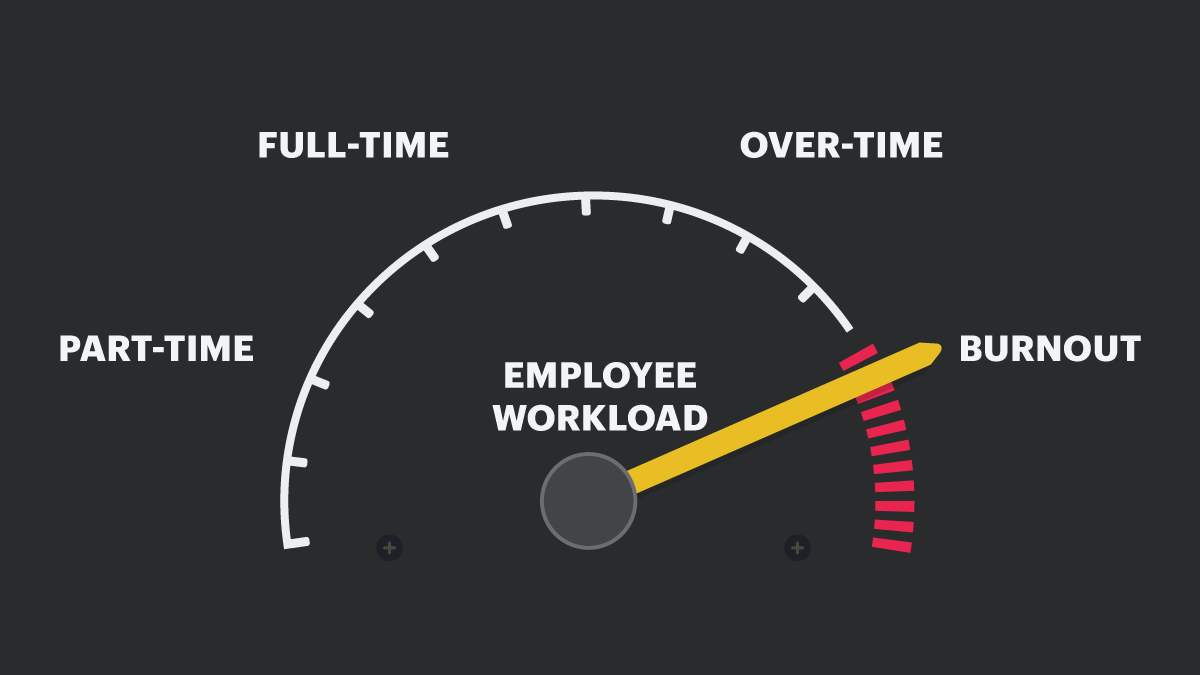Workplace Changes to Reduce Employee Burnout

Workplace stress presents ongoing challenges for everyone—managers, owners, and employees. If left unchecked, stress in the workplace will lead to job dissatisfaction, low employee morale, frustration, exhaustion, and, eventually, total burnout. Too much ongoing stress in the workplace creates a toxic environment and can lead to high levels of turnover for a company and a reduced ability to provide quality services to customers and clients. Productivity suffers when employees are overly stressed and nothing is done to address or mitigate it.
Work-related stress has been around for as long as people have been working, but it has become more acute over the last few years and has been exacerbated by unique and ongoing economic, social, and public health uncertainties. To prevent burnout among employees, it is helpful for employers to consider the main causes for workplace stress cited by employees:
· too much work
· not enough flexibility
· no opportunities for advancement
· toxic workplace or lack of respect from colleagues
· no new challenges
· micromanagement
· monotony: no variation in tasks, projects, and assignments
· disorganized management or lack of structure
· lack of confidence in ability to perform job well
· perceived lack of value in the job itself
While no job can be invigorating all the time, employees have to feel generally engaged and inspired in order for them to keep showing up with a high level of enthusiasm. Approximately two-thirds of full-time workers have experienced burnout at some point, making them less engaged, less productive, and more likely to quit.
While just about everyone wants to make more money, employers don’t necessarily have to offer higher pay to increase employee engagement. There are other ways to help keep employees focused, energized, and feeling valued at work.
· Flexibility: When practical, offering employees choices about where they can work, when, and on what projects increases feelings of control and lets your workers make their own decisions about how to be most productive.
· Team building: Encouraging workers to build collegial, collaborative relationships with one another reduces feelings of competition and one-upmanship and provides a support network in times of stress.
· Training and onboarding: People feel most confident in their work when they have the optimal tools to perform their job and the skills needed to execute. They also feel more connected to an organization whose culture, mission, and values align with their own.
· Advancement opportunities: When people cannot move up, they tend to move on. Finding ways to reward good work with increased responsibility and advancement avenues makes talented employees more likely to stay.
· Perks and rewards: No one wants to work hard completing projects that nobody seems to notice or cares about. Showing employees that their work is valued and appreciated through a reward system and added company perks gives workers an incentive to go the extra step and strengthens their feeling of investment in the company.
· Automation: Many administrative, clerical, and bookkeeping tasks that are perceived as tedious and time-consuming can now be done through automation. Automating tools for businesses help streamline and standardize processes so that they run more smoothly while also freeing up employee time so that people can spend more time contributing to projects that they perceive as valuable, challenging, and important.
· Survey employees: The best resource for helping a business owner assess the stress level in the workplace is the staff that works there. Checking in with employees regularly demonstrates interest in their well-being and engagement while alerting you to issues before they grow into problems.
Automating tools for businesses help ease monotony and improve efficiency
Workers are most productive when their assignments are engaging and varied and they have all the right tools to work efficiently. Online, cloud-based software for businesses can handle just about any business need and can help alleviate the routine stress of recurring clerical and bookkeeping tasks for already-overwhelmed workers. Some tasks that can be automated through software:
Scheduling appointments
Sending and following up on invoices
Emailing marketing material
Analyzing website traffic
Scanning and storing receipts
Issuing payments to vendors
Facilitating customer support
Affordable, easy-to-navigate cloud-based tools are available to businesses of any size, and many have features that can be customized to individual business needs. It is worth taking the time to research automating tools to find the best ones that complement your business and help lighten the burden on your employees.